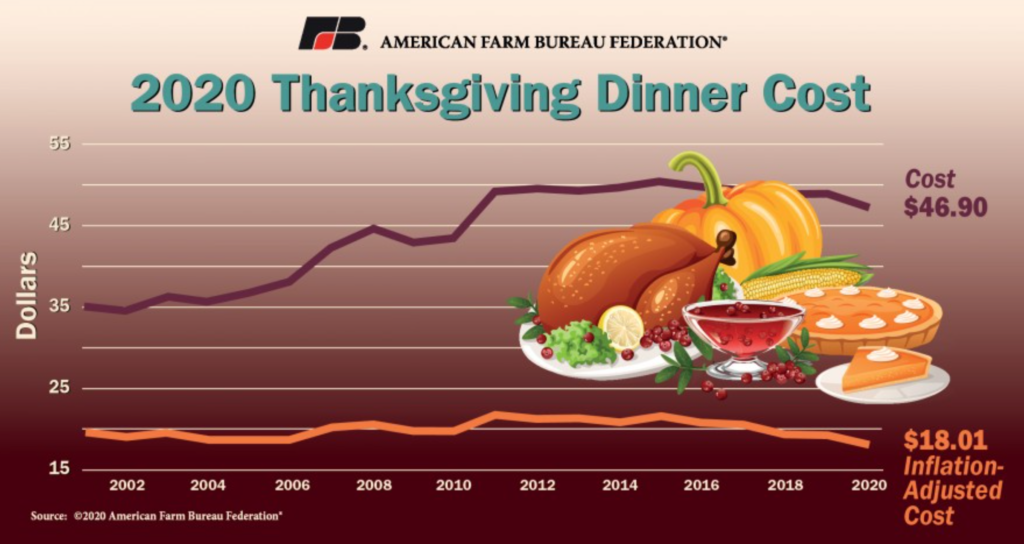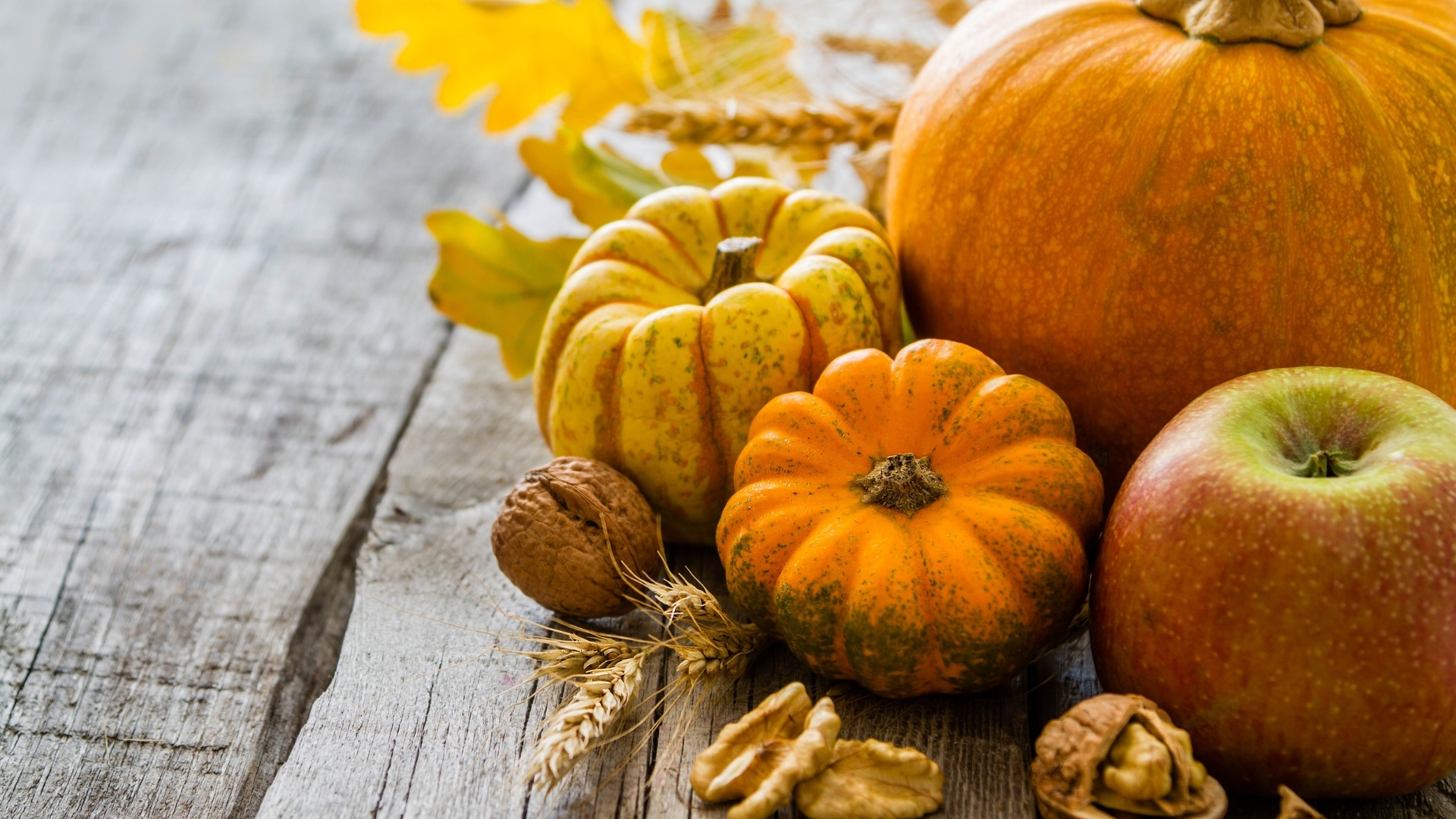For many, Thanksgiving is known for filling turkeys, filling bellies, and, most importantly, filling hearts with gratitude. This year, the fourth Thursday in November will also be responsible for keeping the pocketbooks of grocery shoppers full too.
According to the American Farm Bureau Federation’s 35th Thanksgiving Dinner Price Survey, the cost of a traditional Thanksgiving dinner is down 4% compared to the 2019 survey results. As our nation continues to realize the economic impacts of COVID-19, an affordable holiday meal is good news for those who are facing unique financial restraints caused by the pandemic.
“Despite major disruptions in the supply chain, cratering commodity prices, and labor challenges all caused by COVID-19, agriculture is still open for business and delivered on its promise to keep food on America’s dinner table,” said Carlyle Currier, a rancher from Molina, Colorado, and President of the Colorado Farm Bureau.

AFBF conducts this informal survey annually to provide a record of average Thanksgiving meal expenditures over the years. Since its inception in 1986, the agricultural products on the survey menu have remained consistent to accurately reflect price changes from year-to-year. To get the clearest picture of how trends fluctuate, AFBF collects data from all 50 states.
“Our volunteer shoppers across the country found that the average price for a Thanksgiving dinner for a family of ten came in at $46.90,” says Dr. John Newton, AFBF Chief Economist. This total equates to less than $5.00 per person, the lowest costs seen since 2010.
When looking at the centerpiece of the meal, the price of a 16-pound turkey decreased by 7%. On average, consumers can expect to pay $19.39, or $1.21 per pound, for their bird this year. “Pricing whole turkeys as ‘loss leaders’ to entice shoppers and move product is a strategy we’re seeing retailers use that’s increasingly common the closer we get to the holiday,” explains Dr. Newton.
With more families spending Thanksgiving at home this year, it is important to note that the farmer’s share of the food-at-home dollar was 13.2% in 2018, whereas the farmer’s share of the food-away-from-home dollar sat at 2.4%.
To access more information and to view the complete survey results, please visit AFBF.




